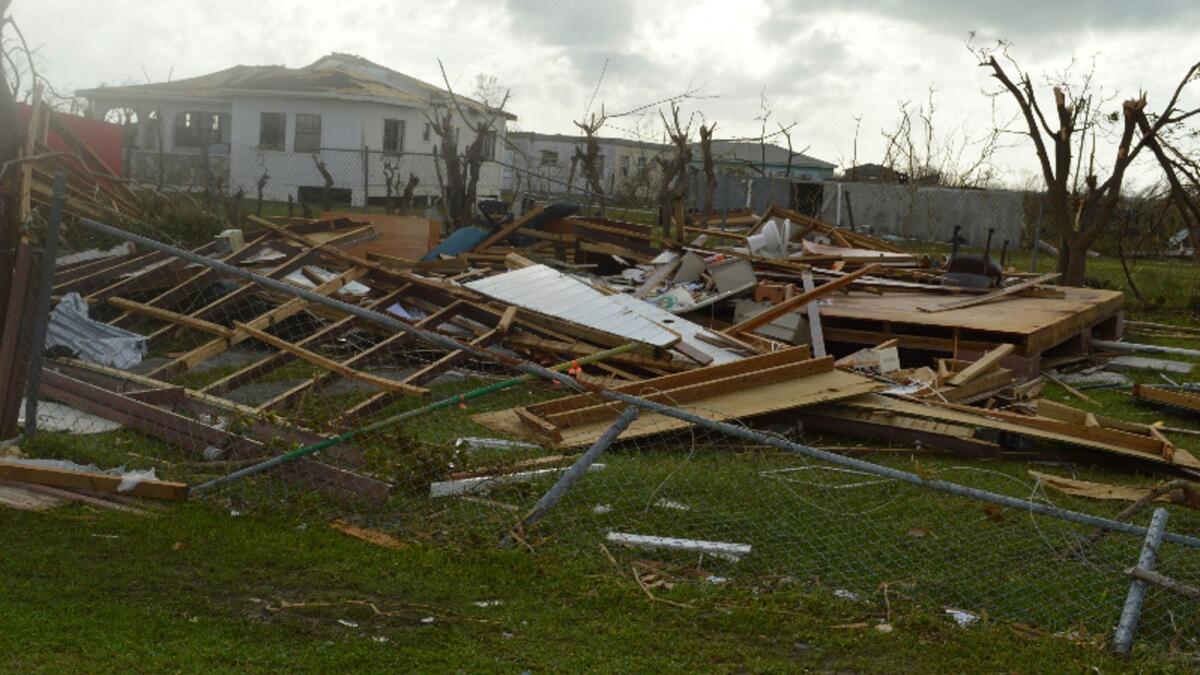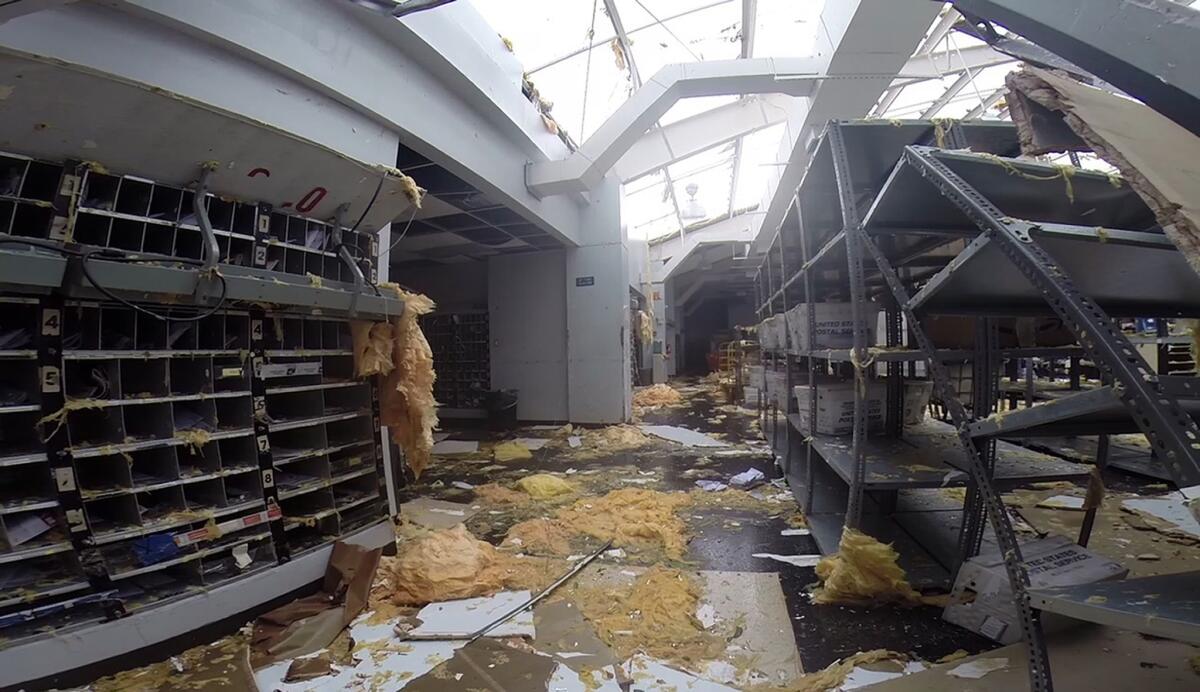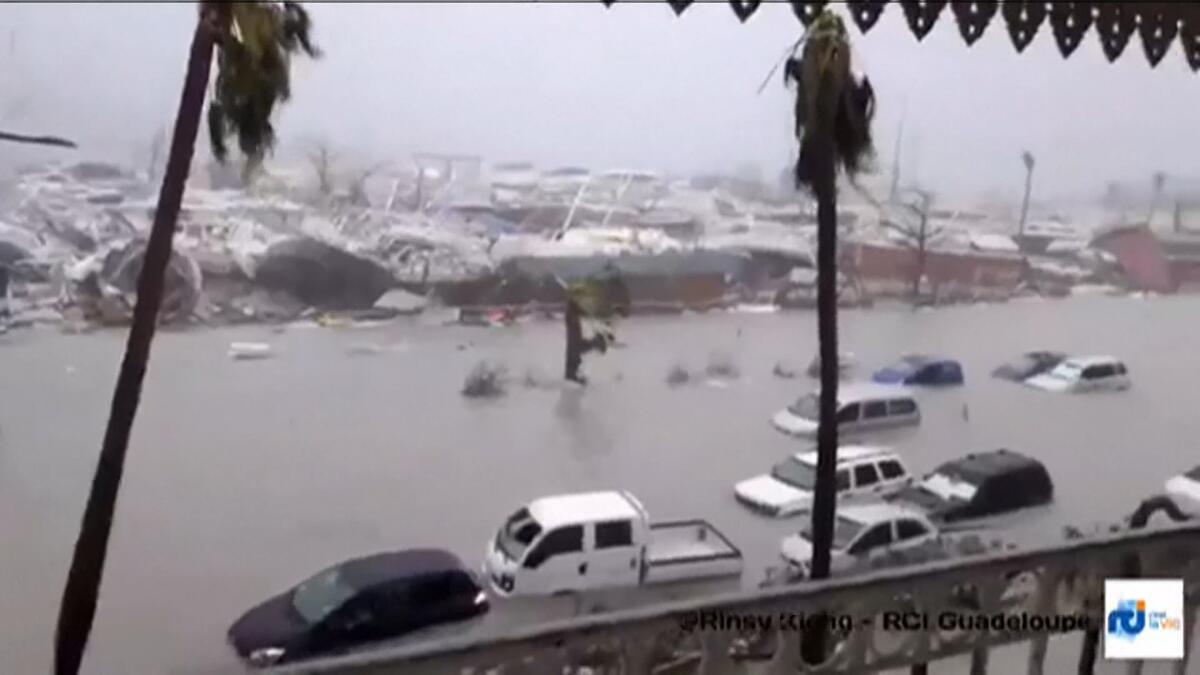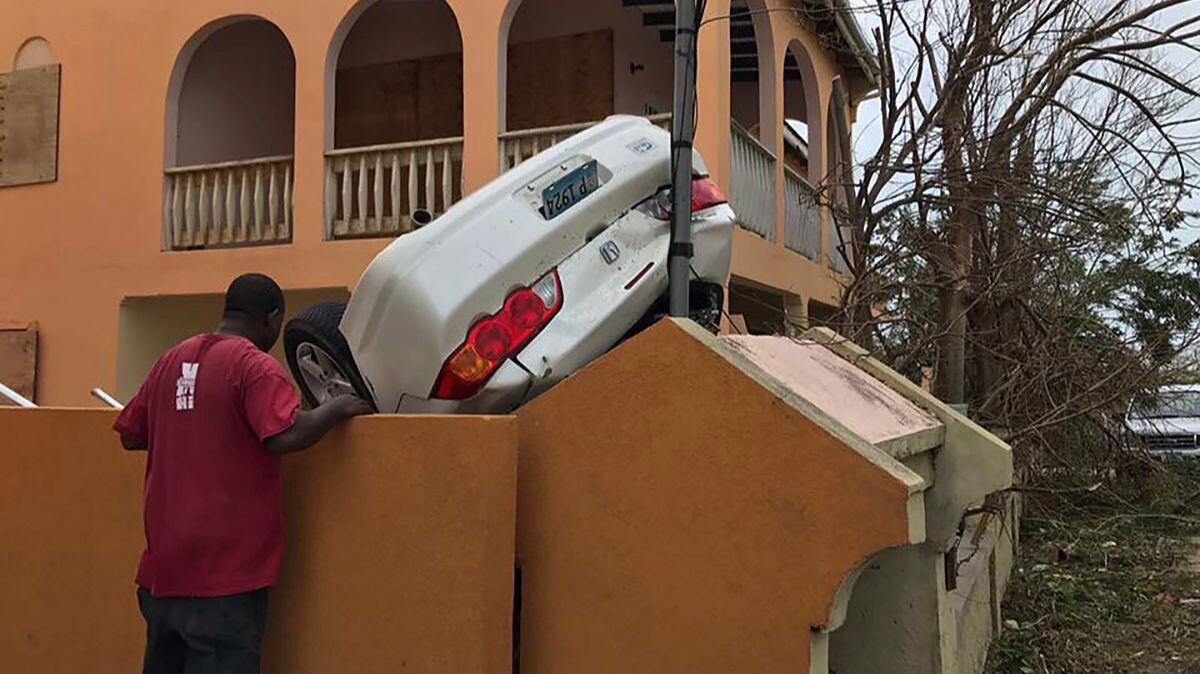After Irma, calls for help from the Caribbean: ‘The island is debris, that’s all it is’
- Share via
Hurricane Irma has devastated several Caribbean islands, with at least 24 fatalities and untold billions of dollars in property damage in one of the strongest storms ever to strike the region.
Those hardest hit include Barbuda, both the Dutch and French sides of St. Martin, the U.S. and British Virgin islands and Anguilla.
Officials and residents in some of those places expressed disappointment with the amount of foreign emergency assistance they were receiving and what they considered to be a shortage of international media attention.
The destruction may not be over. The islands were bracing for Hurricane Jose, which by Friday afternoon had intensified into a Category 4 hurricane that forecasters said could generate sustained winds of 150 miles per hour.
Antigua and Barbuda
Gaston Browne, the prime minister, initially estimated that 95% of the properties on Barbuda — one of the two islands that make up the nation — had been damaged or totally destroyed.
It was “even worse than he thought,” said Ronald Sanders, the country’s ambassador to the U.S., after Browne took a helicopter ride Friday to survey the toll.
“The island is debris, that’s all it is,” Sanders said. “If we get hit, as we expect will happen, by Hurricane Jose on Saturday, I think by Sunday Barbuda will be a complete writeoff. All of the buildings would have gone. There’ll be nothing left. At that point we would really have to start thinking about rebuilding from scratch on that island.”

He said Barbuda had been completely evacuated, with airplanes, boats and barges used to transport some 1,600 evacuees to neighboring Antigua, where residents have been asked to take in the displaced.
While other Caribbean nations have offered what help they can, Sanders lamented that the only government that had “come forward with practical, positive assistance so far has been the government of Venezuela.”
Caracas sent one military plane carrying emergency relief supplies and personnel, according to the Caribbean Disaster Emergency Management Agency, a network of independent emergency units throughout the region.
“The large international countries have not done anything,” Sanders said. “We’ve had telephone calls of condolences and worry and concern, but no practical help to deal with the situation. The big countries you would have thought would have come forward to offer a hand; they haven’t done so yet. So we’ve had to deal with it ourselves.”
The evacuation alone cost the government $15 million, he said.
“We’ve done as much as we possibly can as a small country with very limited resources,” Sanders said. “We’re not going to leave anybody out in the cold.”
The country was planning to hold an international donors’ conference in New York in the coming days, in an effort to raise resources. Medical facilities, schooling and housing would have to be provided for the evacuees.
“This is a humanitarian crisis of enormous proportions,” Sanders said.

U.S. Virgin Islands
In a video posted on Facebook, Kenneth Mapp, the governor of the U.S. territory, described the scale of the devastation and updated on the relief and recovery effort.
The hurricane ripped off rooftops, including the top of Government House, one of the largest governor’s residences in the Lesser Antilles, and destroyed two fire stations and two police stations. At the Schneider Regional Medical Center on St. Thomas, walls caved in, windows shattered and the cancer care unit was destroyed. Patients in the intensive care unit had to be evacuated during the storm.
With telephone service knocked out in many places, people turned to social media in search of their friends and relatives.
Lesley Castle, who was worried about her mother, sister and extended family on the island of St. John, got word Thursday they had survived.
“The house where they stayed is relatively OK. Roads are blocked,” she said. “Power lines are down. People are moving by foot, mostly. They’re waiting on aid. They can’t get communication on the hurricane that’s coming. The most important thing they’re wanting right now is what is the status of the hurricane. What is the track.”
She said people needed mosquito nets, batteries and generators, among other emergency supplies.
The governor said work was underway to restore communication services. Other short-term priorities are cleaning up debris, distributing tarpaulins to cover damaged roofs, and supplying food and water to those in need.
The coastguard was clearing the harbor and authorities had managed to clear the Wilson Airport runway, allowing large military aircraft to deliver relief supplies, Mapp said.
He said President Trump offered “his personal assurance for the full support of the federal government .”
The U.S. government had been “awesome in its partnership before this event, during this event and now as we work for our recovery,” Mapp said.

Sint Maarten/St. Martin
Boats were stacked up on land, homes flattened or under water, and streets turned into gushing streams in the Dutch and French territories that share an island. There is no power, running water or gasoline.
Daniel Gibbs, chairman of a local governing council, told Radio Caribbean International that 95% of the island had been destroyed.
Dutch and French officials said the current death toll of five was likely to rise.
Caren McDonald of Berkeley, Calif., said her 83-year-old father and stepmother were stranded at a hotel on the island with hundreds of other residents and tourists.
“There is no electricity or running water and they have not received any assistance,” McDonald said. “They are running out of food and water, and have been driving around in search of supplies, but to no avail. They are calling us when they are able.”
The Netherlands and France have sent military support, emergency food and water to their territories.
McDonald said she was “deeply disturbed by the media images of Dutch Marines walking around St. Maarten with guns when instead they should be handing out water, food, and other supplies.”

Anguilla
Assessment of the destruction was still underway Friday.
The Caribbean Disaster Emergency Management Agency said 90% of government buildings and business structures on the island suffered damage, along with the main water supply and about 90% of the electricity infrastructure.
The airport runway and most roads leading to the airport had been cleared of debris, and British troops had supported refurbishment of two shelters damaged during the hurricane, the agency reported.
Britain was also providing a 12-person liaison and reconnaissance operating team.
But Dorothea Hodge, a former Anguilla government official, told the Guardian newspaper on Wednesday that Britain’s response had been “pathetic” and “disgraceful.”
She urged the British government “to follow the example of France in responding to the hurricane,” noting that France “has committed to an emergency fund and a reconstruction plan to deal with the aftermath of the storm.”
Haiti
“We were very, very fortunate,” said Beth Carroll, emergency coordinator for Catholic Relief Services in the capital, Port-au-Prince. “We only felt the outer bands of the storm here.”
There were not “the really scary winds, not the kinds of heavy amounts of rain or the storm surge that we were very worried, so we are very, very grateful,” she said. “But on the unfortunate side, we don’t have very good infrastructure, and Haiti is a vulnerable country, so the rain that we did have it did cause flooding, especially in the north and northeast part of country. So there are cleanups and assessment being done.”
Some 2,000 people who took shelter in emergency shelters need to be resettled back home, Carroll said.
Cuba
The extent of the damage was still unclear as Irma hit Cuba on Friday afternoon.
Hundreds of thousands of coastal residents were relocated inland, along with tourists in beach-side resorts that were susceptible to damage, according to international media reports.
Some Cubans sought refuge in underground caves used by the military.
For more on global development news, see our Global Development Watch page, and follow me @AMSimmons1 on Twitter
ALSO
The retiring Boeing 747 flying to Florida to help with Hurricane Irma evacuation
Faster than Harvey and bigger than Andrew, Irma is unlike any storm Florida has ever seen
Patience in short supply as desperation sets in among South Florida residents still in Hurricane Irma’s path
More to Read
Sign up for Essential California
The most important California stories and recommendations in your inbox every morning.
You may occasionally receive promotional content from the Los Angeles Times.











